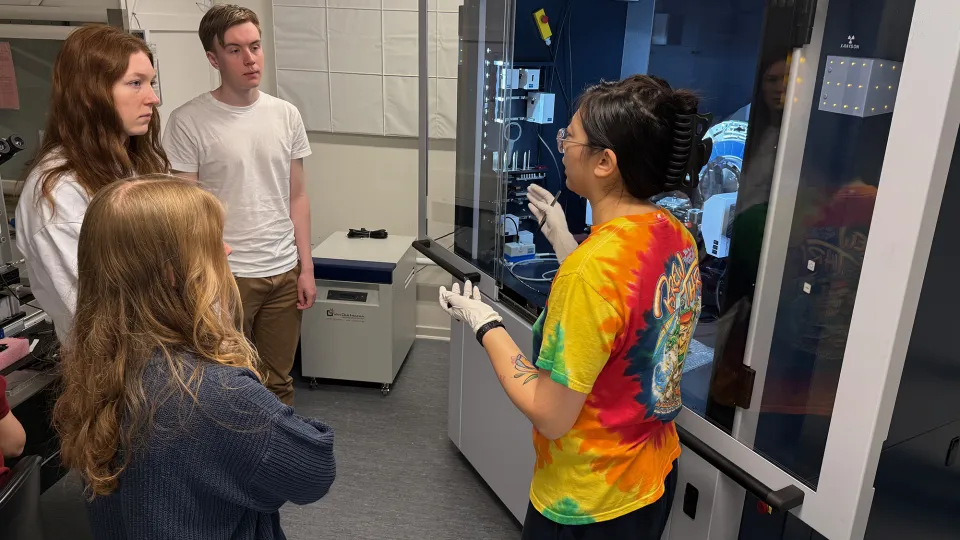“This is a good way to see the daily life of science – how it is to work in a lab, as a fact, not just only seeing a show that is the result of something that has had been prepared for ten hours in advance” says Ingrid Frostgård who recently finished 2nd grade in high school at S:t Petri skola in Malmö.
She was one of three high school students who chose to spend the first two weeks of their summer vacation at NanoLund, getting a sneak peek into science. On a tight schedule, they got to dive into several different topics: quantum dots, transmission electron microscopy, optoelectronics, cell biopsies using nanostraws, experiments with fluorescence and microfluidics, spark ablation and photoluminescence and X-ray diffraction.
PhD student Emelie Zhu who works with growing nanostraws that eventually will be processed into solar cells, was one of all the supervisors who hosted the three high school students. Her mission was to show how X-ray diffraction can help in telling one structure from another, based on the distance between the crystals in them.
Tweaking the recipes
“Then, of course, the distance inside the crystals are different depending on what atoms that are involved, how we have grown the structures, under what pressure and in what temperature... but altogether, this can help us finding new information about our samples and discover new minerals and structures that we can use for characterizing – simply how to tweak our recipes,” says Emelie Zhu.
“The laboratory aspect is really so much more interesting than the merely theoretical part. I truly enjoyed getting this experience,” says Elsa Thelander from Tycho Braheskolan in Helsingborg.
In a year, when they all have graduated from high school, all three of them want to do something completely different for a year or a half: working, travelling, or something similar.
I truly enjoyed getting this experience.
”But this scholarship has definitely made me consider doing something like this in the future”, says Albin Johannesson from S:t Petri skola.
They all got the scholarship after being recommended by their teachers to apply. The scholarship is a part of a programme, Forskningsnätet Skåne, (Researcher’s net, Skåne), which is an association of schools in Skåne that have decided to give high priority to scientific perspectives in their teaching. Since its start in 2012, many young students have had the opportunity to get acquainted with the everyday life of a researcher. Some twenty different departments and institutions at Lund University, Malmö University, and the Swedish University of Agricultural Sciences participate.


